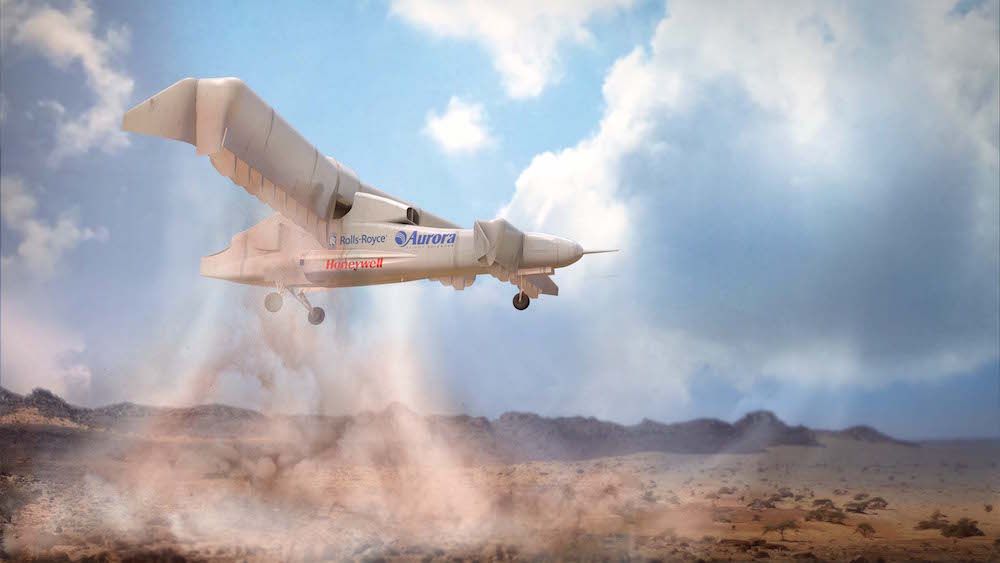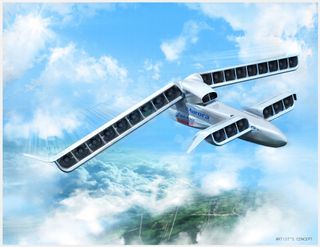New 'LightningStrike' Plane Will Take Off, Hover & Land Vertically

An unmanned aircraft that can take off, hover and land vertically could be closer to reality, as part of a Defense Advanced Research Projects Agency (DARPA) program to develop these futuristic flying machines.
DARPA, the government agency charged with developing new military technologies, awarded a contract to Aurora Flight Sciences Corp. to design a new vertical takeoff and landing (VTOL) aircraft, the company announced March 3.
Aurora was one of four companies competing in the first phase of DARPA's VTOL Experimental Plane (X-Plane) program. The other competing companies were The Boeing Co., Karem Aircraft Inc., and Sikorsky Aircraft Corp., according to DARPA. [Supersonic! The 10 Fastest Military Airplanes]
"Aurora is proud to support DARPA on what we all hope to be a truly historic breakthrough in aviation technology," John Langford, chairman and CEO of Aurora, said in a statement. "If successful, VTOL X-Plane’s radically improved flight capabilities could lead to revolutionary advancement of the U.S. military's future mission capabilities."

Langford said Aurora plans to build a demonstrator aircraft, known as LightningStrike, that will have the following qualities:
-Achieve a top sustained flight speed of 300 to 400 knots (345 to 460 mph, or 556 to 740 km/h);
-Raise aircraft hover efficiency from 60 percent to at least 75 percent;
Sign up for the Live Science daily newsletter now
Get the world’s most fascinating discoveries delivered straight to your inbox.
-Present a more favorable cruise lift-to-drag ratio of at least 10, up from 5 to 6. (Aircraft have high L/D ratio if they produce a lot of lift or have a small amount of aerodynamic drag, according to NASA.); and
-Carry a useful load of at least 40 percent of the vehicle's projected gross weight of 10,000 to 12,000 lbs. (4,500 to 5,400 kilograms).
Aurora is collaborating closely with Rolls-Royce PLC and Honeywell International Inc. to reach a number of milestones. For instance, LightningStrike will be the first aircraft to have distributed hybrid-electric propulsion ducted fans, meaning the hybrid propulsion units are spread out along the aircraft to provide thrust for the plane.
LightningStrike will also have an "innovative" synchronous electric-drive system, tilt-wing and tilt-canard-based propulsion for vertical takeoff and landing (a canard is a wing configuration on the aircraft) and high efficiency for both hover and high-speed forward flight, according to Aurora.
The aircraft will be made with a Rolls-Royce AE 1107C turboshaft engine that can power three Honeywell generators and 24 ducted fans that are distributed on the wings and canards. Moreover, LightningStrike's electric distributed propulsion system is designed to have integrated and distributed ducted fans that, along with the synchronous electric drive system, would help the aircraft efficiently move forward at a high speed, Aurora representatives said.
"The Aurora team's goal is to help redefine the future of vertical flight," said Mark Wilson, chief operating officer of Rolls-Royce LibertyWorks, an advanced aerospace technology research and design unit.
The company is aiming to begin test flight in 2018, company representatives said.
Follow Laura Geggel on Twitter @LauraGeggel. Follow Live Science @livescience, Facebook & Google+. Original article on Live Science.

Laura is the archaeology and Life's Little Mysteries editor at Live Science. She also reports on general science, including paleontology. Her work has appeared in The New York Times, Scholastic, Popular Science and Spectrum, a site on autism research. She has won multiple awards from the Society of Professional Journalists and the Washington Newspaper Publishers Association for her reporting at a weekly newspaper near Seattle. Laura holds a bachelor's degree in English literature and psychology from Washington University in St. Louis and a master's degree in science writing from NYU.










